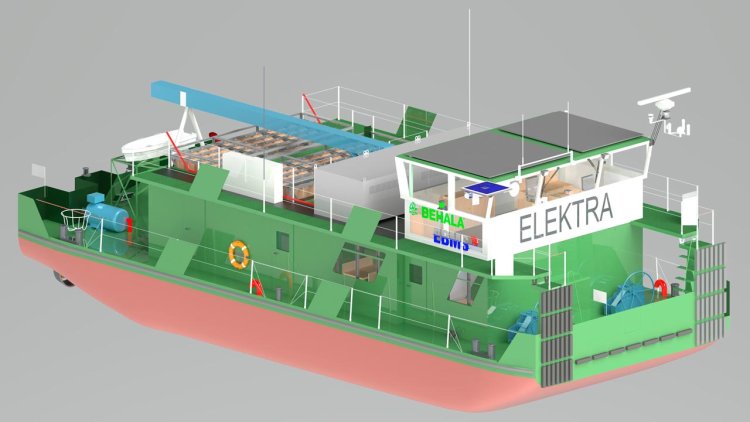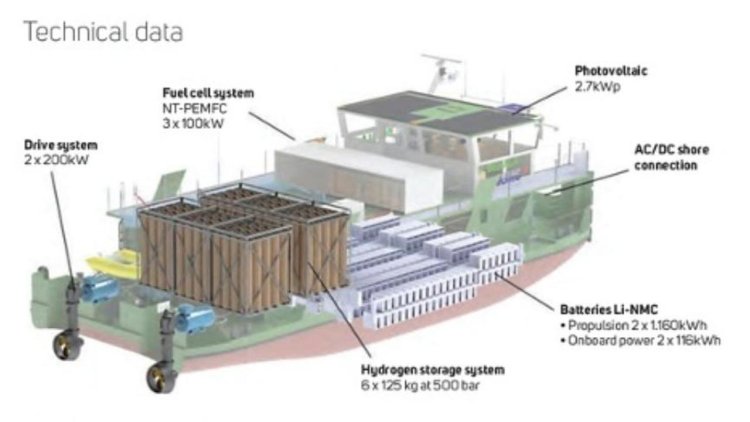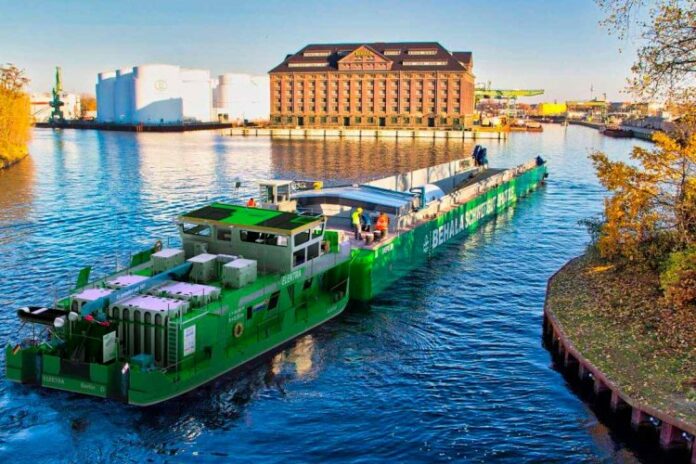In his opening speech, Federal Minister Dr. Volker Wissing spoke about on the importance of hydrogen mobility to achieve the German government’s climate protection goals:
“The ELEKTRA is a Lighthouse project: It is the world’s first push boat in which battery-electric propulsion is combined with hydrogen and fuel cell technology. The entire project is a blueprint for the climate and environmentally friendly inland shipping, not only technically but also in terms of regulation real pioneering work.”
The Mayor of Berlin, Franziska Giffey, said:
“The world’s first zero-emission push boat is the impressive result of the cooperation between stakeholders from the shipbuilding, energy and propulsion technology industries. I’m particularly pleased that a lot of Berlin’s ingenuity flowed into the development and construction of ELEKTRA. This lighthouse project shows us how we can succeed, by implementing innovative ideas, in improving the climate on our access waterways for the long-term. Berlin wants to be a pioneer here.”

Under the project management of the Dept. of Maritime Systems Design and Operations at the Technical University of Berlin, BEHALA – Berliner Hafen- und Lagerhausgesellschaft – (logistics), shipyard Hermann Barthel, BALLARD Power Systems (fuel cells), Argo-Anleg (hydrogen system), SER Schiffselektronik Rostock (electrical energy system), EST-Floattech (battery system) and HGK Shipping (nautical operation) are involved in the development, construction and testing of the push boat ELEKTRA.
As the first emission-free ship, the ELEKTRA will serve as a role model, because its power system is designed to be applicable to a variety of barge and coastal vessel types. Also, this is not only about providing energy for the ship’s propulsion and pushing convoys, but also about the energy for the crew, who live, cook and wash on board.
In addition to propulsion, the system provides energy for the temperature control of the cabins and the wheelhouse. The battery system also needs a certain ‘comfortable temperature’ for efficient operation and a long lifespan. All of this must be done with a limited amount of carried energy and without loss of operational range.

The waste heat from the fuel cells is used through continuous water cooling and the cabins are heated by a brine heat pump. An additional advantage is that the ship always operates in water with temperatures above 0°C under its keel.
The use of a self-developed energy management system and a digital sailing assistant support the captain and logistics planner with the planning of operations and transports.
With 750 kg of gaseous hydrogen (at a pressure of 500 bar) on board and a battery capacity of approx. 2,500 kilowatt hours, the ship has a range of approx. 400 kilometres when sailing in combination with the loaded heavy lift barge URSUS.
Therefore, next to the Westhafen in Berlin, only one additional land-based station is needed to supply the ELEKTRA with hydrogen and electricity to sail on the waterways of Berlin in the direction of the Rhine/Ruhr, Hamburg and Stettin. In total the vessel can operate push-barge combinations up to 150 m in length.



